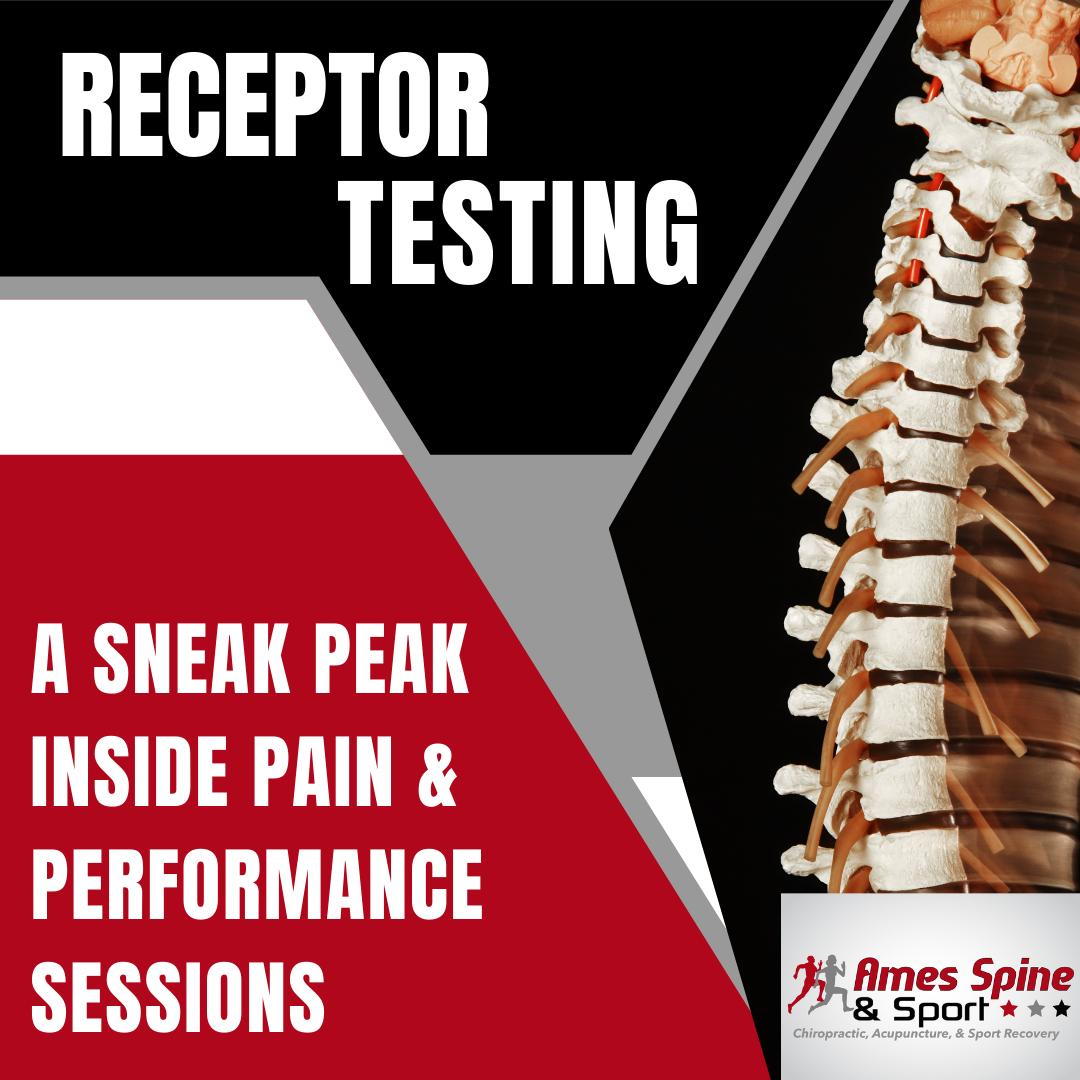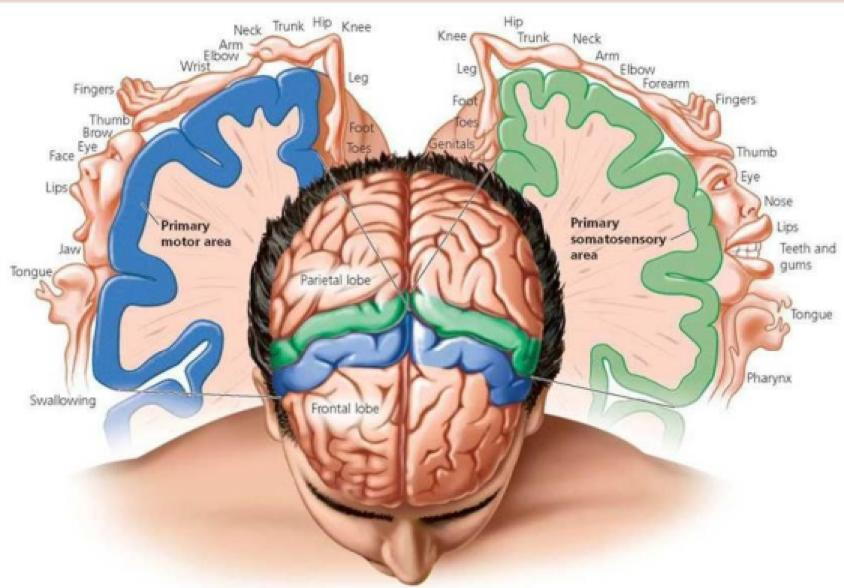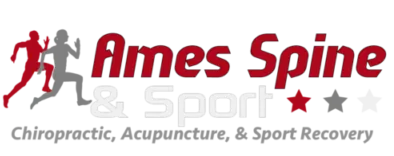
Receptor Testing
In a pain and performance session to fully rehabilitate movement of injury Mychal test different sensations to see if the area of the body is fully functioning and to see what stimulus you can provide yourself at home to help speed up the rehab process. In the extremities the sensations from side to side should be the same. Example if I provide vibration stimulus to the thumb on one side, the other thumb should feel the same. It is important to check multiple receptors as each run to different spinal tracts and can affect pain and movement. The sensations that are easy to test are, light touch, pressure, vibration, temperature, and sharp vs dull. If any of the receptor’s tests have deficit side to side, it can also create motor output problems.
The Why?
The image below shows our primary somatosensory area (green) comes before the primary motor area (blue) in the brain. Understanding the brain fires bottom to top and back to front, then it only makes sense that healthy or unhealthy somatosensory area of the brain will affect everything forward of it. One easy and extreme example of this is when we touch something very hot for the first time our body’s first instinct is to move our hands away from it as fast as possible. This response is the body and brain’s way to protect itself. On a less extreme example we can pick a joint, pick a movement and then pick a sensation we want to provide to see if it helps the movement.

Testing it out ourselves, first getting some full body range of motion testing is a must. So forward bend, back bend, rotations through the spine and check shoulder ROM. Once we have a baseline let’s choose a joint and a move to perform. Take your index finger and perform the best circle with it as possible. After getting the baseline of how it moves, we are going to provide a sensation the index finger let’s all do light touch first and to provide the light touch sensation, take your other index finger and thumb and rub the knuckle part of your index finger. Recheck how the finger circle goes, if your movement is easier and more fluid, then light touch is a receptor that area of the body responds well to. If the movement in the finger is good let’s recheck our full body ROMs and if the movement had no change, then pick another stimulus and repeat the process again.
If this fascinates you and you want to learn how to move better and become a better athlete, schedule a Pain & Performance Session with Mychal. Movement is medicine and getting pain free movement will change your life!
